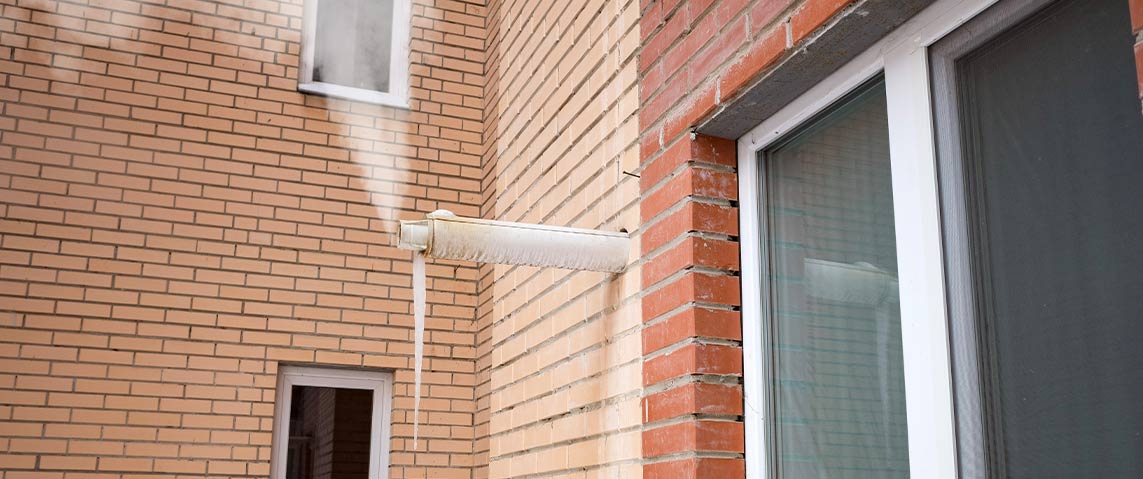Boiler Flue Regulations Explained | Simple Guide

What is a boiler flue?
When a boiler functions, it produces waste gases that should be eliminated from the system. The flue is the pipe that carries the gases out of the boiler. As they are potentially harmful, the flue must be situated outside so that these gases do not re-enter the room.
In addition, a boiler flue placement should ensure that waste gases are not directed towards nearby properties. Boiler gas flues are short and protrude out of an external wall.
Boiler flue extension regulations
A flue transports the gases, produced by combustion, out of the boiler. Similarly, the location of the flue must be as far away from neighbours as possible. Around 90% of the houses in the United Kingdom use central heating systems. It is necessary to follow specific measures to maintain minimum safety standards:
Flue placement must be away from windows, the ground, doors, and corners.
It must be 75mm below ground levels, exhausts, and soil drains.
At least 300mm higher than the ground or rooftop.
At least 2,000mm below the Velux window
From an opening, such as a door or window, into the house, it should be 1,200mm
It should be at least 2.1 m above the ground if it faces a public space
Note: The regulation and measurement changes from more minor to larger space depending on the power of boilers. In the case of a rented house, contact the landlord if the boiler and flue are not in a suitable place. This could pose a danger to the tenants and passers-by.
Checking your gas flue
It's good if you examine your gas flue often, particularly during winter because of their increased workload.
The flue will be one of the most critical components during your annual service. Our engineers can work with both boilers and flues. They are trained to work to the latest gas boiler flue regulations.
Finding your boiler flue
Identifying the flues depending on the shape and size
Round flues - Found on units that have been installed in the last 15 years and carry gases through regulation 22mm pipes
Square flues – Found on units that are using 15mm pipes
Horizontal flues – Comes through the exterior wall
Vertical flues – Comes where the boiler is not fitted to an external wall
Does every boiler have a flue?
Most boilers require a flue. This pipe safely removes harmful waste gases produced during operation.
Exceptions: Older back boilers, typically found behind fireplaces, lack flues and vent through chimneys. However, these are becoming increasingly rare.
Flue regulations exist to ensure safety:
Proper placement minimises exposure to these gases for occupants and neighbours.
Specific distances from windows, doors, and ground levels must be maintained during installation.
If you're unsure about your boiler flue, consult a qualified engineer. They can verify compliance and advise on any necessary adjustments.
Different types of boiler flues
Boilers come with two main flue types:
Horizontal flues: These are the most common, exiting through an external wall near the boiler.
Vertical flues: Used when the boiler isn't located on an external wall, venting the gases upwards through the roof.
Flues can also be distinguished by their shape and age:
Round flues: Typically found on newer boilers (under 15 years old) and use 22mm pipes.
Square flues: More common on older boilers and use 15mm pipes.
What if you are using the current boiler?
Understanding that boiler flue regulations have changed does not mean that an existing boiler needs renovation or that it needs to be relocated.
These regulations only apply to new installations, so be cautious if someone servicing your old boiler tells you that it's no longer compliant or must be replaced because of a new law. You might be asked to install one of their new expensive boilers when your old one works fine.
Do boiler flue regulations only apply to new installations?
No, boiler flue regulations do not solely apply to new installations. Existing boilers must also adhere to safety standards. However, the regulations primarily focus on new boiler installations.
This means:
New boilers: Must comply with current regulations, including flue placement and efficiency standards.
Existing boilers: Don't need immediate modifications unless deemed unsafe by a qualified engineer.
Conclusion
Several regulations apply to the installation of boilers and flues. Following various boiler flue regulations will help ensure your safety and that of your environment when it comes to hazardous gases emitted from boiler flues.
If you're planning to purchase a new boiler for your home or building, or if you want to move the boiler placement, it is recommended to consult a qualified and reputable engineer to determine the ideal positioning for your boiler complying with the regulations. Besides, a competent engineer can also assist you in choosing the best cost-effective boiler that meets your requirements.
At smart cover, we aim to offer our customers suitable boiler insurance cover and efficient customer service. We have relationships with engineers throughout the UK to provide quality boiler breakdown cover. Our boiler cover includes the price of repairs on your gas boiler, controls, and the gas supply pipe connected to your metre.
With smart cover's boiler breakdown cover, we'll send one of our engineers to help you out concerning your boiler breakdown

 Appliance
Appliance







